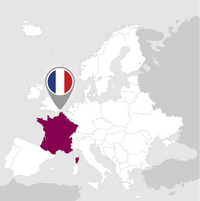详情

香水

味道
服务于:
14 -16 °C.
长寿:
10 - 15 years
醒酒时间:
1 hour

搭配
Meat
Cheese
Pork
生产者
Oenosaphiens
来自这个酒庄
It is a trading/importing company that was founded in Milan in 2022. The project was born from the desire to leave our mark on the continuous evolution of a product and a market, which seems to never die: wine.
We, Federico, Filippo and Giacomo, are three oenologists with the idea and ambition of bringing French wines to Italy made from grapes we have selected and vinified. To make this possible, the first part of the job is to look for partners, more than partners, affinities. The wines of Oenosapiens are in fact the fruit of a technical and conceptual collaboration: the producers with whom we work are people we have met along our French past and present, they are friends, companions in the vineyard and cellar companions. 阅读更多
We, Federico, Filippo and Giacomo, are three oenologists with the idea and ambition of bringing French wines to Italy made from grapes we have selected and vinified. To make this possible, the first part of the job is to look for partners, more than partners, affinities. The wines of Oenosapiens are in fact the fruit of a technical and conceptual collaboration: the producers with whom we work are people we have met along our French past and present, they are friends, companions in the vineyard and cellar companions. 阅读更多


| 名称 | Oenosaphiens Cotes du Jura Poolsard 2023 |
|---|---|
| 类型 | Red green still |
| 葡萄酒名称 | Cotes du Jura AOC |
| 年份 | 2023 |
| 容量 | 0,75 l |
| 酒精度 | 12.0% 按体积 |
| 葡萄品种 | 100% Poulsard |
| 国家 | France |
| 产地 | Jura |
| 供应商 | Oenosaphiens |
| 土壤成分 | Geological formation period: Jurassic (-215 to 45 million years ago). Calcareous terroir enriched by different marls (white, red and blue), typical of the northern Jura. |
| 酿酒工艺 | Cold pre-fermentation maceration (< 10°C) for 3 days. Pressing and transfer to steel vats. Alcoholic fermentation with indigenous yeasts at low temperature (< 20 °C) followed by malolactic fermentation with native lactic acid bacteria. |




